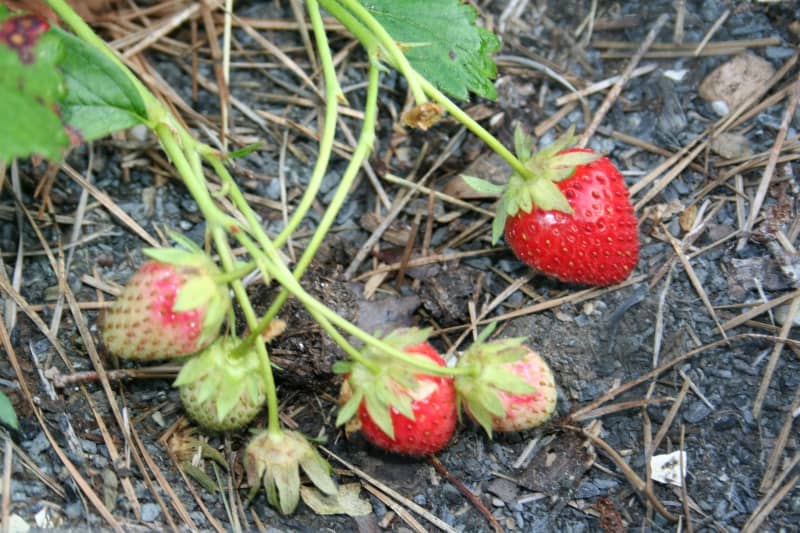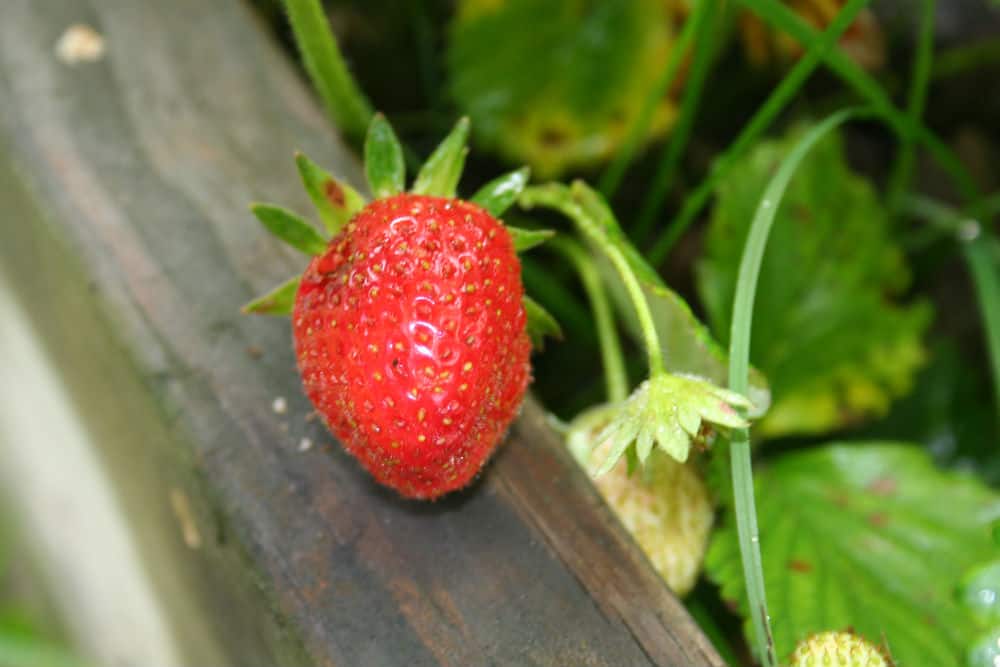Keep your strawberry plants alive through the cold and snow outdoors in the garden – here’s what to do with strawberry plants in winter. Please note that these instructions refer to plants grown in raised beds or in the ground.
Treat Strawberries Like Perennials with Special Winter Care
Strawberries are an easy to grow small fruit in the home garden. But they do need special care and preparation in order to survive a cold winter. Here’s how to tuck your strawberries in for their long winter nap so that when they awaken in the spring, they’re raring to grow.
Cold Air, Freezing and Thawing Can Damage Plants
Strawberries are shallow-rooted. Because their roots and crowns, the central growing portion of the plant, are so near the soil surface, cold air temperature can really damage them. The freezing and thawing action of the soil can also push plants right out of the ground. If they are dislodged during this process, they can dehydrate and die.
You need to take special steps to ensure that your strawberry plants survive the winter. Here’s what to do to help your strawberries live through the winter.
Winter Preparation for Strawberry Pots and Containers
Strawberry pots, jars or containers are special terra cotta planters with little pockets or holes around the sides. You tuck strawberry plants into each soil-filled hole and into the top. You can also plant strawberries in half whiskey barrels and other kinds of planters.
To prepare strawberries in containers for the winter months:
- Wrap the outside of the pot with burlap fabric. DO NOT USE PLASTIC. It doesn’t insulate well.
- Secure the burlap with cords or tape.
- Stuff the top of the jar with burlap or straw.
- Move the entire container or jar into an unheated garage or shed.
- Check around your plants periodically in the spring. When you see green leaves appear again, remove the covers and place the entire container back outside in the sunshine. Water well in the spring.
Winter Preparation for Strawberry Plants Growing in the Ground
Strawberry plants growing in the soil or in raised bed gardens also need special care. You need to protect their delicate crowns from snow, ice and freezing temperatures. The best mulch is pine straw. You can see pine straw in this picture – it’s the little brown things, like toothpicks.
Pine needles shed during the year. They turn brown, like the leaves of deciduous trees, but the entire tree does not lose its leaves. You can rake up pine straw from around your property if you have pine trees. Because I live on a pine tree farm, that’s what I do.
Rake the pine straw from the ground, then place it over the top of your garden bed, covering the strawberry plants with about one to two inches of pine straw mulch after the first hard frost of the year. Leave the plants covered with mulch until the spring. When green leaves emerge, it’s time to gently push the pine needles off of the plants with your hands. Rake it up once it is off of the plants and discard it.
You can purchase pine straw mulch in bags at garden centers. Other types of mulch or straw can work just fine, but be sure whatever you put on the strawberry bed does not contain seeds. Otherwise, you’re just seeding weeds!
Weed One Last Time
I always give my strawberry bed one last good weeding before putting the berries to bed for their long winter nap. Weeds love strawberry beds, probably because the soil is so rich and nutritious. But strawberries do not like the competition for soil nutrients.
When you weed during the fall, you’re preventing future weeds from sprouting because you are removed adult plants, potential seeds, and roots. So do give your strawberry patch a good weeding before covering the plants.







[…] Tucking Strawberry Plants in for the Winter […]